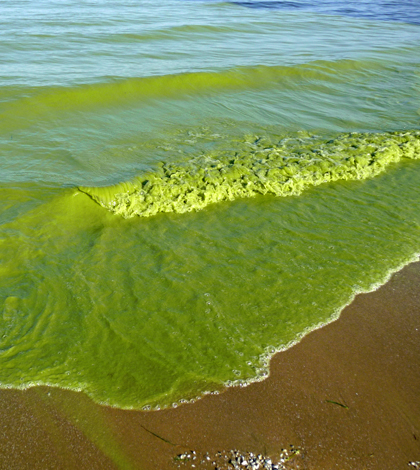Voluntary Actions Weak In Reaching Lake Erie Phosphorus Reduction Target

Lake Erie algal bloom in September 2009. (Credit: Tom Archer)
In early 2016, the governments of the United States and Canada called for a reduction of Lake Erie phosphorus loads by 40 percent. The goal is a lofty one, and new research led by experts at the University of Michigan finds that it’s pretty likely to go unachieved with the voluntary reduction efforts that are being used currently.
Scientists ran 12 management scenarios through six computer models each to make the find. Their methods were meant to mimic the range of outcomes possible in the real world, and revealed that the current model of relying on farmers to voluntarily reduce nutrient runoff from their lands won’t be enough to reach the reduction target.
Seven of the 12 management scenarios they tested don’t meet the 40-percent target, researchers say. The most promising ones that remain include widespread use of nutrient management practices, especially subsurface application of fertilizers, and substantial conversion of cropland to grassland and expanded use of buffer strips.
Of the scenarios that did work, one (No. 6), has very unrealistic expectations. It would achieve the target by taking 30,000 acres of cropland out of production. Similar to that scenario, the others would need more policy actions to get close to hitting the goal.
Top image: Lake Erie algal bloom in September 2009. (Credit: Tom Archer)




0 comments